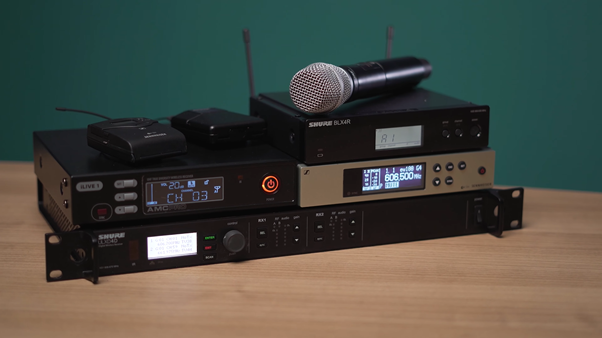Guide
Tech Tuesdays: Wireless Microphones Review
01/09/2021

Previously on Tech Tuesdays we’ve discussed the technical differences between analogue and digital wireless microphone solutions. But this still leaves the question: what is the best solution? The answer to this changes depending on a lot of factors, so let’s look into that a little more.
With indoor hospitality reopening and in-class higher education resuming this week, we’re seeing an increase in the number of wireless systems requested. There’s increased requirement for voice reinforcement as distancing rules are applied, but also the flexibility to change configurations and move throughout rooms depending on their use as rooms are repurposed.
When looking at higher education, we expect 1-2 channels per lecture, and often many rooms in a single building. Looking at the benefits of a digital system, this is typically our recommendation for this application! The channel density in these products is key: you can reduce the licensing requirements when you can fit more channels into a single 8 MHz band, and you also reduce the risk of interference this way too. This is also critical for systems in crowded city centers. Many systems offer remote monitoring, which helps the local AV team.
Consider: Shure SLXD, UHF, licensed or Sennheiser Speechline, DECT, license-free
Analogue systems can be equally great: their cost savings are significant, and the technology provides great reliability. As discussed in the video, frequency modulation means that they take up a varying amount of spectrum, which can be limiting to channel counts and increase possibilities for interference. Analogue systems best suit small channel counts, such as hospitality venues with small presentations or events. Many systems have a maximum of 8 channels per band, depending on the environment they are in, which does leave flexibility, though check with each manufacturer on the recommended settings.
Consider: Sennheiser Evolution Wireless
Wireless audio is a great addition to any installation, but the selection can be a lot to consider! Always consult with Ofcom (UK) for the spectrum availability in your area before purchasing a system, as this can affect your selection too, and let us know if you have any questions on wireless audio by reaching out to [email protected]!
